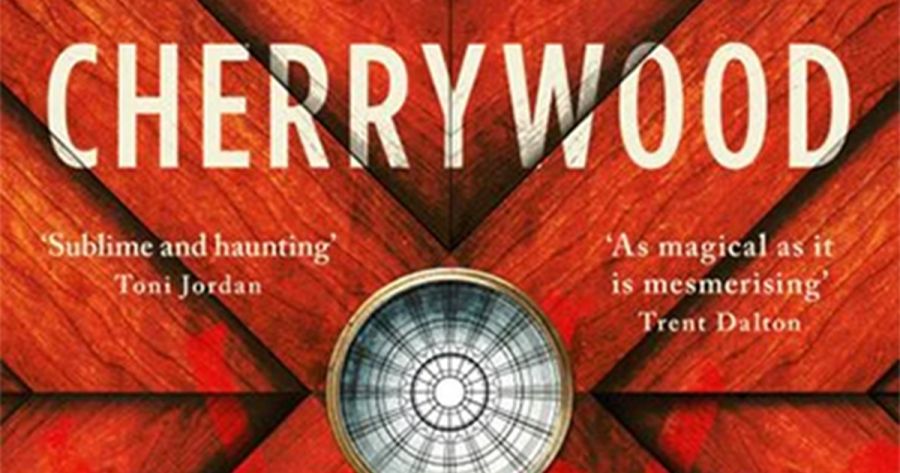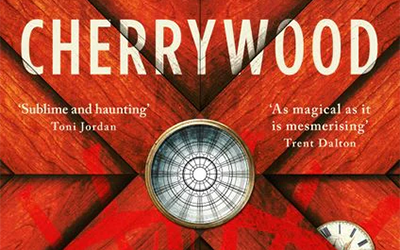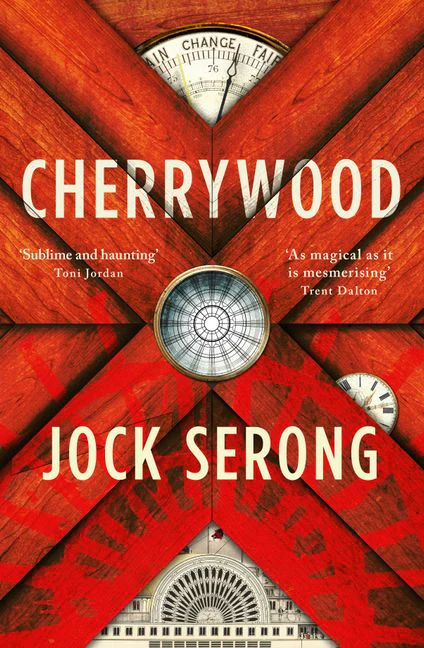
- Free Article: No
- Contents Category: Fiction
- Review Article: Yes
- Article Title: And the ship sails on
- Article Subtitle: Jock Serong’s elegant new novel
- Online Only: No
- Custom Highlight Text:
Intertextual spins on Peter Carey’s 1988 novel Oscar and Lucinda may yet be finding new reading congregations. Carey’s progenitive postcolonial novel refuted landscapes empty of First Nations peoples, less jewel horizon than abject mire and macadam, along which the failed preacher Oscar and his party moved the components of a glass church overland and upriver to Edenic rural Bellingen. A metaphor of failed settler hopes and dreams, the fabulist glass church leitmotif is symbolic of white intrusion, as an omniscient Aboriginal narrator observes in the chapter savagely and simply entitled ‘Glass Cuts’.
- Featured Image (400px * 250px):

- Alt Tag (Featured Image): A. Frances Johnson reviews ‘Cherrywood’ by Jock Serong
- Book 1 Title: Cherrywood
- Book 1 Biblio: Fourth Estate, $34.99 pb, 389 pp
- Book 1 Cover Small (400 x 600):

- Book 1 Cover (800 x 1200):

But the plump settler historical novel, replete with cards of fate, discordant musicscapes, and wraiths a-plenty, is back. Gregory Day’s poetic-polyphonic The Bell of the World (2023) was recently described by critic Joy Lawn as ‘the long-awaited successor to Peter Carey’sOscar & Lucinda …’ Both books, Lawn opines, ‘leave indelible symbolic images’. Now Jock Serong, departing from his deft historical trilogy – Preservation (2019), The Burning Island (2020), and Settlement (2022) – has written Cherrywood, described in the media release as bringing the ‘delicate, witty character-driven storytelling of Peter Carey’s Oscar and Lucinda to bear’.
In Day’s work, the ‘prepared’ piano and its subversive acoustics are pivotal; in Serong’s historical thriller, a salvaged paddle steamer Cherrywood (named for its rare timbers), rebuilt around 1920 as a ghostly hotel of the same name, takes centre stage. The hotel harbours tragic secrets within its timbers, acquired from the Transcaucasus by inexperienced industrialist Thomas Wrenfether, who emigrated to Melbourne with his precious cargo. Shift to Melbourne 1993, and the hotel’s leadlights shatter when resident spirits are put under pressure by occasional visitors. This is never good for trade, as the stock trio of Jack-Irish, old-timer barhops might agree. Ho hum, you might say, or clever intertext via Peter Temple? Why is this pub just like the actual Napier Hotel in Fitzroy, but with better cabinetry and more gloom? It turns out that the trio were killed in a car accident decades before. It also turns out that the pub moves.
Early on, when the illustrious paddle steamer (detailed shipwright scenes beguile) sinks on its maiden voyage in Port Phillip Bay under the drunken hand of Captain Carville, the devastated Wrenfether feels ‘trapped in a glass cage’. His grief takes a terrible course, and his architecture-trained wife Lucinda is left to salvage the timber for a new business option. Lucinda, a skilful woman come down in the world, steps straight out of historian Clare Wright’s history of female publicans, Beyond the Ladies Lounge: Australia’s female publicans (2014); Serong deftly foregrounds women’s contributions to labour history sans recourse to stifling narrative revisionism.
Lucinda’s daughter Annabelle (Nan) plays the redoubtable ageing publican in 1993. Nan actively conceals then grumpily reveals the Cherrywood’s mysteries, showing, in Jeanette Winterson’s words, how buildings themselves ‘catch and hold very violent traumatic episodes and then, in certain circumstances, can release them back to those of us who are sensitive enough to pick them up’ (The Book Show, Radio National, 10 June 2024).
This tale of an inner urban pub, trapped within Fitzrovian boundaries, exhibits the writer’s Australianist bona fides, though opening scenes also sketch emergent European modernities. When the first cars arrive on Edinburgh’s streets, the orphaned Thomas is dazzled by the free-wheeling reconfigurations of ‘a kettledrum and a steam engine’. Post–Great War chapters interweave televisual scenes set in a modern Melbourne law firm. Legalese matters are authoritatively detailed, though a stock genre character appears in the form of wolfish insurance litigator Brandon Manne.
Successful lawyer Martha, trapped inside this corporate tower with the tedious Brandon, discovers the pub by chance. Or not. When she hails a cab, a sage, tattooed Repo Man (yes, always the same one-eyed cabbie) drops her outside the Cherrywood. Here, Martha lands more than a bottleshop odyssey and a glass or two of time-travelling red. She falls in love with the benevolent barman Joey, washing and drying glasses of time. A cryptic but ultimately touching love story ensues.
Some uncanny conceits are more pleasurable than others. I could not fathom why Joey, orphaned (there are multiple orphans) in the paddle-steamer debacle, ages less than a decade, while Nan lives through real time. Lifting kegs over decades has perhaps kept him youthful and good in bed. Elsewhere, the Cherrywood’s ‘devils’ find time to undertake carpentry jobs at a local Fitzroy community centre, resurfacing asbestos ping-pong tables and a cigarette-stubbed piano with offcut cherrywood. Sometimes, cheerful, pious binaries of good and evil prevail. This points more to ripping yarn than postcolonial territory.
The hotel periodically sails across the suburb, Mary Poppins style. This goes charmingly unremarked by the general population, and it is the job of the reader and Martha to parse the pub’s sentient agencies. Clever Martha divines pub rules on sticky notes (‘The pub cannot leave Fitzroy’; ‘The pub doesn’t like me’, etc). Rather sentimentally, the beery TARDIS doesn’t budge if someone falls in love inside. But Nan does not own any land, and repossession appears imminent. A solution needs to be found and Nan, with help from the devils and Martha, is its architect.
Rules of craft are elegantly applied to this entertaining historical thriller. World-building and characterisation across time and place are wonderfully realised. The final scenes offer an exquisite set piece, mapping Nan’s moving fate against the extraordinary Melbourne floods of 1994. Connections between past and present are well caulked as the waters of memory release.


Comments powered by CComment